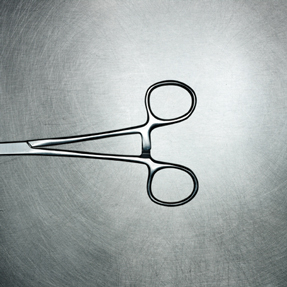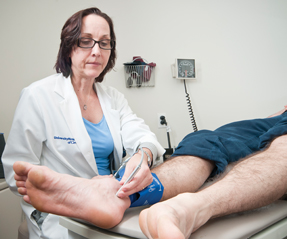Letters to the Editor
Readers respond about cost-cutting measures.
Cost-cutting measures don't represent internal medicine
The juxtaposition of two articles in the February 2011 ACP Internist prompted me to think about the direction American internal medicine has taken in the beginning of the 21st century.

First, the article “How many are too many for CT scans? “ addresses the marked increase in computed tomography since its introduction some 30 years ago, describing what many authorities consider overuse. Instead of overimaging our patients, we are told to “slow down and think,” which is certainly good advice.
The same issue includes an article (“Cut costs without cutting corners to keep the office efficient “) on a recent session at the Medical Group Management Association's national meeting. The session's presenter, a surgical subspecialist, recommended, among other things, saving time by using a “scribe” to take a patient's history. He noted that doing so in his own practice reduced his 15 to 20 minutes with a patient to less than five minutes. He explained, “You can see more patients and do more procedures if you use a scribe.”
I found that advice remarkable. When I learned the craft of medicine, really not all that long ago, my mentors taught me that 90% of diagnoses during a typical work day were made on the basis of the history and another 5% or so picked up from the physical examination. Only the remaining 5% required elaborate investigations to establish.
Now we are apparently advised to leave the history taking to a “scribe.” I guess as physicians, we have become too busy to actually practice medicine anymore. Interestingly enough, the training of this “scribe” is not specifically described—presumably it could be a nurse, a physician's assistant, a nurse's aide, or a high school student working part time to determine if a career in medicine is really for her.
The dramatic increase in the use of objective investigations such as computed tomography, which many criticize, appears to be a direct correlate of physicians' abandonment of the actual practice of medicine. The era of “Oslerian medicine” may now be declared over.
My revered teacher, the late Philip Tumulty, MD, once wrote the following in an essay titled “The art of healing”: “It is simply not possible to give excellent care to patients in a quick, easy or offhand fashion, or through the agency of some aid or substitute. … Time personally spent with the patient is the most essential ingredient of excellence in clinical practice. There are simply no short cuts and no substitutions.”
In June 2000, quoting that statement, I wrote a letter to Annals of Internal Medicine warning that “If current trends in the valuation and allocation of physicians' time continue, we will soon cease to be ‘physicians' and will become the ‘providers' that we are taken to be by the bureaucracies that seek to rationalize our work.”
Those trends have unfortunately continued. What may be new, however, is the promotion, in an ACP-sponsored publication, of cheap tricks that deprive patients of the attention of a caring, knowledgeable physician.
William S. Aronstein, FACP
Glendale, Ohio
I must take strong issue with the article “Cutting costs without cutting corners to keep the office efficient “ (ACP Internist, February 2011).
Advice from a urologist, who focuses on procedures, does not carry over to internal medicine. I was horrified to read Dr. Baum's statement that “a scribe can help ensure physicians do only the medical work for which they were trained.” Excuse me, but I was trained to take a history!
Dr. Baum also commented that using scribes in his practice reduces the time spent with a patient to less than five minutes. Why would any respectable internist cut corners on the history, which is the heart of the interview? After all, 90% of internal medicine diagnoses are made on the history alone. It makes no sense to delegate that to a scribe.
I was also indignant to read Dr. Baum's suggestion that full-time employees should be replaced with part-timers to save on health insurance and benefits, and that benefits for full-time employees should be limited. Do we not have an ongoing health insurance debate, with the underinsured being a large portion of the population? And as physicians, should we not be good stewards and leaders, and lead by example, by giving our staff the best coverage instead of the worst?
Dominique Toedt, ACP Member
Whittier, N.C.
I was disturbed to read the article “Cut costs without cutting corners to keep the office efficient “ in the February ACP Internist, suggesting that we should replace full-time employees with “part-time workers, in order to forgo health insurance and benefits” and “consider offering employee-only health insurance instead of family coverage; increasing the deductible; and omitting dental and vision coverage.”
I believe ACP is working to ensure universal health insurance coverage for all Americans. It is contrary to that principle to suggest we cut health insurance benefits for our employees. We, of all employers, are aware of the necessity of health insurance coverage in our very ill health care system. I do not disagree that our practices should operate efficiently and that we are responsible for health care costs, but until the system of payment changes, we should not penalize our employees.
Pamela E. Turner, ACP Member
Portland, Ore.
I found the article about the MGMA conference, and much of the advice from urologist Neil Baum, to be disheartening at best and totally incompatible with much of what I try to teach residents about outpatient medicine. I'm certain that his use of a scribe to take a history, review symptoms and recite the physician's plans, as well as doing the paperwork, saves him lots of time. He notes that he spends 5 minutes instead of 15 minutes with the patient. I wonder how the patient feels. Perhaps this system works well in a urology practice. But in a primary care practice, so much of what we really accomplish with patients is rooted in relationship, interpretation and real attempts to understand their concerns. I don't think a “scribe” can do this for us. I'm glad his scribe has increased his income by as much money as many primary care doctors earn in a year.
Dr. Baum also advocates lowering overhead by reducing employees to part-time positions to forgo health insurance and benefits. This obviously helps his bottom line, but what does it say to his employees? There are far too many uninsured people in our country. This approach would mean that the physicians who struggle to provide care to uninsured patients would be contributing to that problem, instead of being positive role models. I'm sure Dr. Baum is a very good businessman and I respect that. But I hope primary care internists have some other priorities as well.
Mary Noble, FACP
Spokane, Wash.



